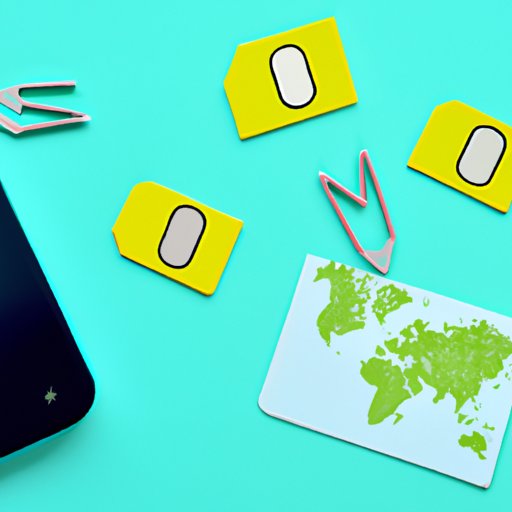Introduction
Whether you’re traveling abroad for business or pleasure, you’ll likely need to access the internet while you’re away from home. Being connected can help you stay in touch with loved ones, attend to work obligations, and access important information. One of the ways to do this is through data roaming.
A Beginner’s Guide to Data Roaming: Everything You Need to Know
Data roaming is the ability to access the internet and use your phone while you’re outside your home country. It allows you to use your existing mobile phone plan and still be able to access data, make calls, and send texts just as you would at home.
Data roaming works by your phone connecting to a local network in the country you’re visiting. This network is usually provided by a local mobile operator which your home carrier has an agreement with. The two carriers exchange a fee for providing services to each other’s customers. This fee, along with some additional charges, is usually passed on to the customer, making data roaming an expensive option for travelers.
Some common terms related to data roaming include roaming charges, which are fees charged by your mobile carrier for using another network outside your home country. Roaming data refers to the data usage you incur while you’re abroad. International roaming is another term often used to refer to data roaming.
The Cost of Data Roaming: How to Save Money While Traveling
Data roaming can be expensive, and many travelers are often surprised by the high costs associated with it. When you use data roaming, you’re essentially using the services of a foreign carrier, which may charge significantly higher rates than the ones you’re used to at home.
There are several ways to save money on data roaming charges. One is to turn off data roaming on your phone and use Wi-Fi hotspots wherever possible. This will allow you to connect to the internet without incurring any data charges. Additionally, you can buy travel-specific SIM cards or use data roaming plans provided by your home carrier. Before you travel, check with your carrier to see what options are available and which is the most cost-effective for your needs.
The Pros and Cons of Data Roaming: Is it Worth it?
Using data roaming has its advantages and disadvantages. One of the main advantages of using data roaming is the convenience of being able to stay connected while you’re away from home. Another benefit is that you can use familiar apps and services without needing to switch to new ones or having to purchase a separate phone when you arrive at your destination. You also won’t need to worry about buying and swapping out SIM cards, which can be time-consuming and frustrating.
However, data roaming can be expensive, and the risk of bill shock is real. Additionally, data speeds can be much slower than what you’re used to at home, and coverage can be limited, especially in rural or remote areas. Finally, travelers on a tight budget may find that data roaming is simply too expensive for their needs.
When deciding whether to use data roaming, consider factors such as the length of your stay, the type of activities you’ll be doing, and your budget. This will help you make an informed decision about whether data roaming is worth it for you.
Data Roaming vs. Buying a Local SIM Card: Which is Right for You?
Another option to consider when traveling abroad is buying a local SIM card. A local SIM card can be cheaper than using data roaming, and it often offers higher data speeds and better coverage. However, you will need to switch SIM cards, and you may need to purchase a new phone if your existing one isn’t compatible with the local network. Finally, local SIM cards may not be available or may be difficult to find in some countries.
When deciding between data roaming and buying a local SIM card, consider factors such as the length of your stay, the number of destinations you’ll be visiting, and the availability of local SIM cards. This will help you make an informed decision about which option is best for you.
How to Avoid Data Roaming Charges: Tips and Tricks for Travelers
If you decide to use data roaming, there are several ways to avoid high charges. One of the most effective ways is to turn off data roaming on your phone and use Wi-Fi whenever possible. You can also download maps, travel guides, and other content ahead of time so you don’t need to use data while you’re away. Finally, you can use messaging apps that don’t require data, such as WhatsApp or iMessage.
Other tips for reducing data roaming charges include using low-data modes for apps, monitoring your data usage, and setting up alerts for exceeding data limits. These actions can help you stay connected without breaking the bank.
Conclusion
Data roaming can be a useful but expensive option for travelers. By understanding how data roaming works, its costs, benefits, and drawbacks, and considering factors such as your length of stay and budget, you can make an informed decision about whether to use data roaming or alternative options. Additionally, following the tips and tricks above can help you minimize your data roaming charges, allowing you to stay connected while you’re away without incurring high fees.
